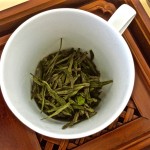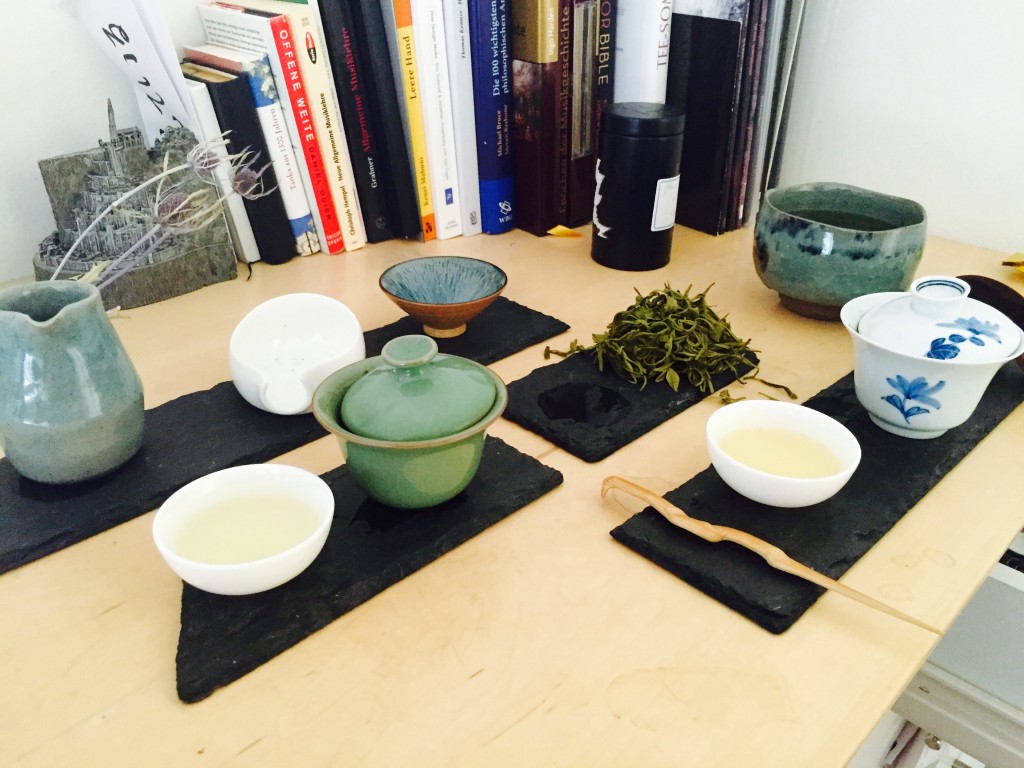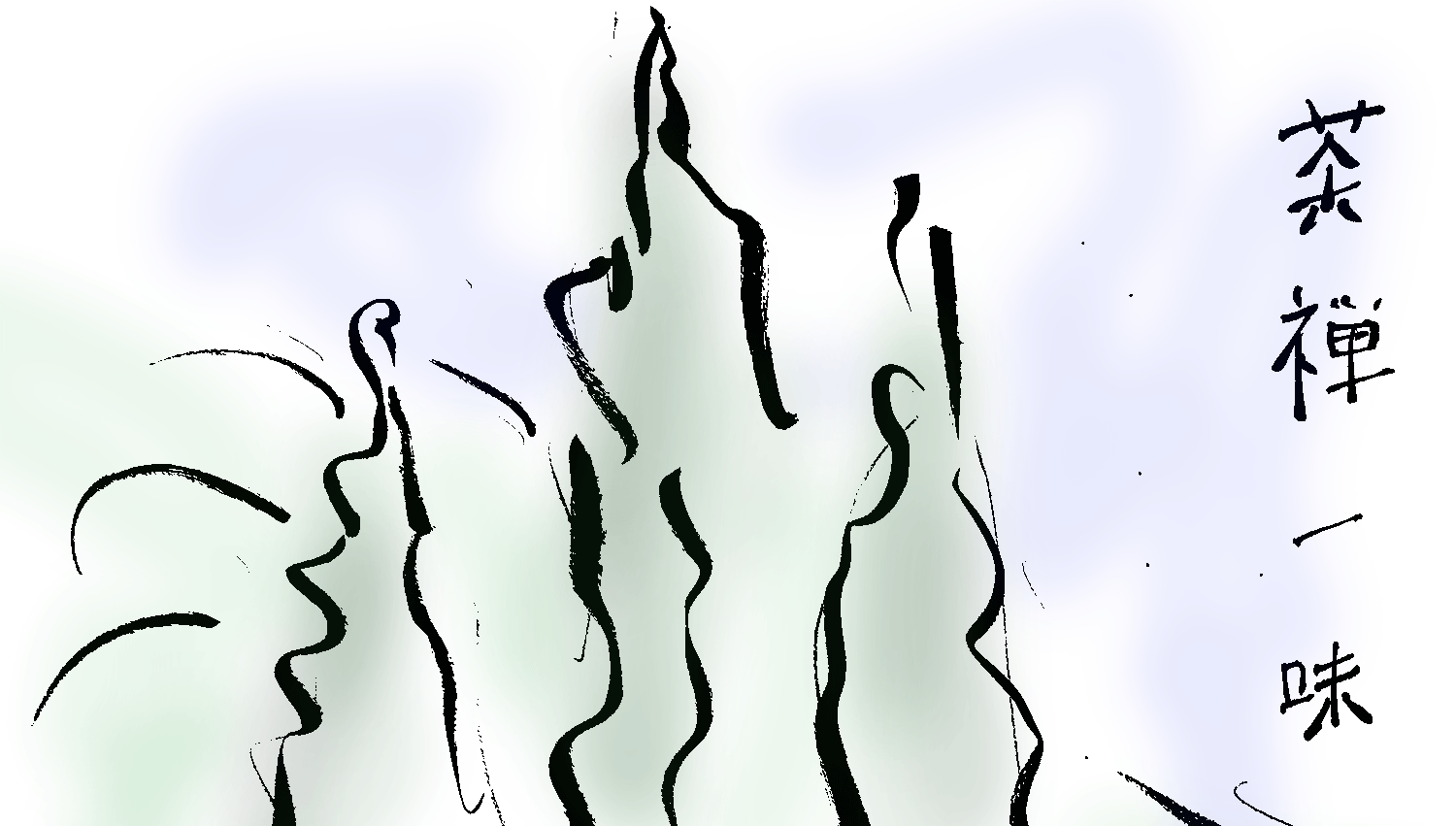I’m lucky that I could learn a great deal about tea from Meng-Lin Chou. She is possibly one of the most knowledgeable people in Europe when it comes to oolong teas. Visit her store in Zurich, and check out her blog!
Green teas are not oxidized, the greens are killed right after plucking in one of four ways (or combination thereof):
- Baking. These teas often have sharper, fresher tastes.
- Steaming. These tend to have grassier, more astringent aromas. Most common for Japanese teas.
- Roasting. Most common, tend to produce nuttier aromas.
- Sun-Drying. Rare, produce the freshest aromas.
Green teas can vary a lot in taste, depending on how they are produced, and of course, which cultivar is used and where it is grown. Tastes can range from fresh, brisk, grassy, floral to warmer nutty notes, beans, cereals and leather.
Note though that often, sharp, grassy flavours are a sign of production mistake.
You can also categorise green teas based on their shape, but this has little impact on the taste and thus makes little sense. There are for example flat teas (such as Long Jing), there are snail shaped or eyebrow shaped teas (like Bi Luo Chun), needle or bamboo leaf shaped (for example Gyukuro), and rolled (called Zhu Cha or gunpowder tea).
Baked Green Tea
Teas are baked in the oven, usually repeatedly, allowing them to cool and rehydrate in between baking periods. This process can be automated, which is why there are a lot of bad teas in this category. Fine teas, however, rely on precise timing and control of temperature.
Some famous teas in this category are:
- Huangshan Maofeng (黄山毛峰) from Anhui, possibly the most famous baked green tea. Charcoal notes and a deep, sweet flavour.
- Taiping Hokui (太平猴魁) from Anhui. Made from the Shida (柿大) cultivar, which produces very big leaves. They are then shaped to form surprisingly long lances. Tastes very green and fresh.
Steamed Green Tea
The oldest form of killing the greens. It is usually used in conjunction with subsequent roasting or baking. It is not widely practised in China anymore, but is very common for Japanese green teas.
In teas that are only steamed, the quality of the harvest is the main factor for the final taste.
The most famous of this category certainly is the Japanese Gyokuro (宇治玉露). The leaves are covered for 3 weeks before harvest to promote the production of amino acids. It has a distinct umami taste, and aromas of nori and hay. Japanese Sencha (煎茶) is also steamed, but is not covered before harvest.
Matcha powder, which is used in the Japanese tea ceremony, is also made from steamed tea leaves that have been covered before harvest.
Roasted Green Tea

This is the most common processing method. The leaves are thrown into a wok, and then turned and pressed against the wok by hand. This process is hard to automate, since the roaster needs to feel how the leaves are changing during the roasting to determine when they are finished.
One of the most famous teas in general falls into this category:
- Long Jing (龍井), which has a distinct chestnut aroma or baked mung beans, and a malty aftertaste. More elegant expressions focus less on the chestnut aroma, and present a more ethereal soy milk scent.
Because this tea is so sought-after, though, there are a lot of fakes.
Originally, it comes from the Xihu district in Hangzho, Zhejiang – in fact, Xihu Long Jing is a protected term, similar to an AOC. However, there are excellent Long Jings from other regions in Zhejian and other provinces, which are more reasonably priced. - Bi Luo Chun (碧螺春) from Jiangsu is also quite famous, less nutty, but darker green notes such as pine forest and buckwheat honey.
- Most tea regions also produce Yunwu (云雾), which is usually a machine roasted, but decent quality tea, with some malty, cereal notes. Because it is not as prestigious as other teas, it is very reasonably priced; making it a great everyday drinking tea.
-

Yongxi Huoqing, a gunpowder tea Zhu Cha or gunpowder tea, is also roasted. However, most of these teas are of really low quality. They often have very animalistic, leathery notes – which makes them interesting as a cocktail ingredient, but quite unenjoyable as a tea for sipping.
Sun-Dried Green Tea
These tea would retain most of the tea leaves’ quality and freshness. However, the tea needs to dry for two days in the sun; and weather in early spring in most green tea regions is quite unpredictable. Because of this, the farmers would have to play by chance, and most prefer to bake or roast their teas as not to risk wasting their harvests.

Preparation
Generally, green teas like cooler temperatures, so as a rule of thumb, brew 3 grams of tea, with 150 ml of 80°C water for 90 seconds. However, this will vary greatly depending on which style of tea you’re using. Gyukuro, for example, likes temperatures closer to 60°C, while some high quality Long Jings are good with 90°C water.
Also note that green tea has a cooling effect, which makes it a great drink for summer afternoons, but is less suitable winter mornings, or when you’re feeling weak.

